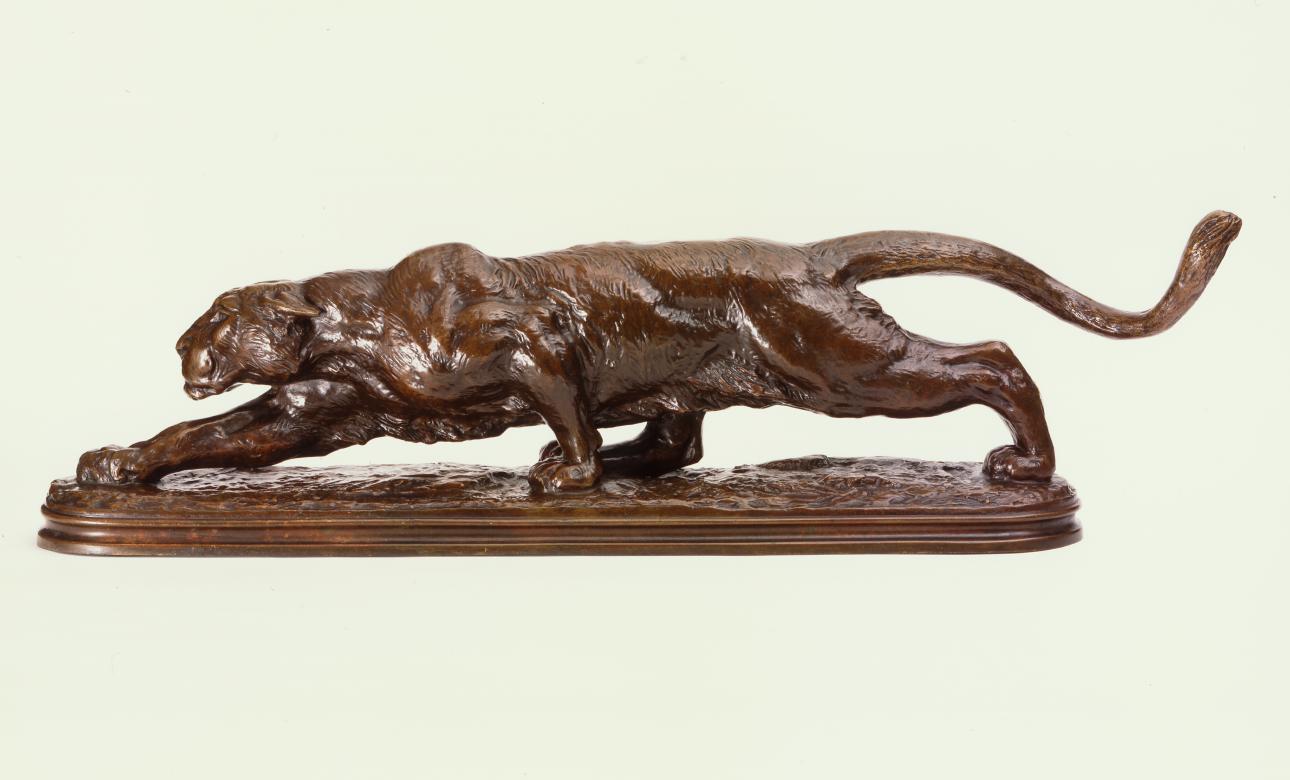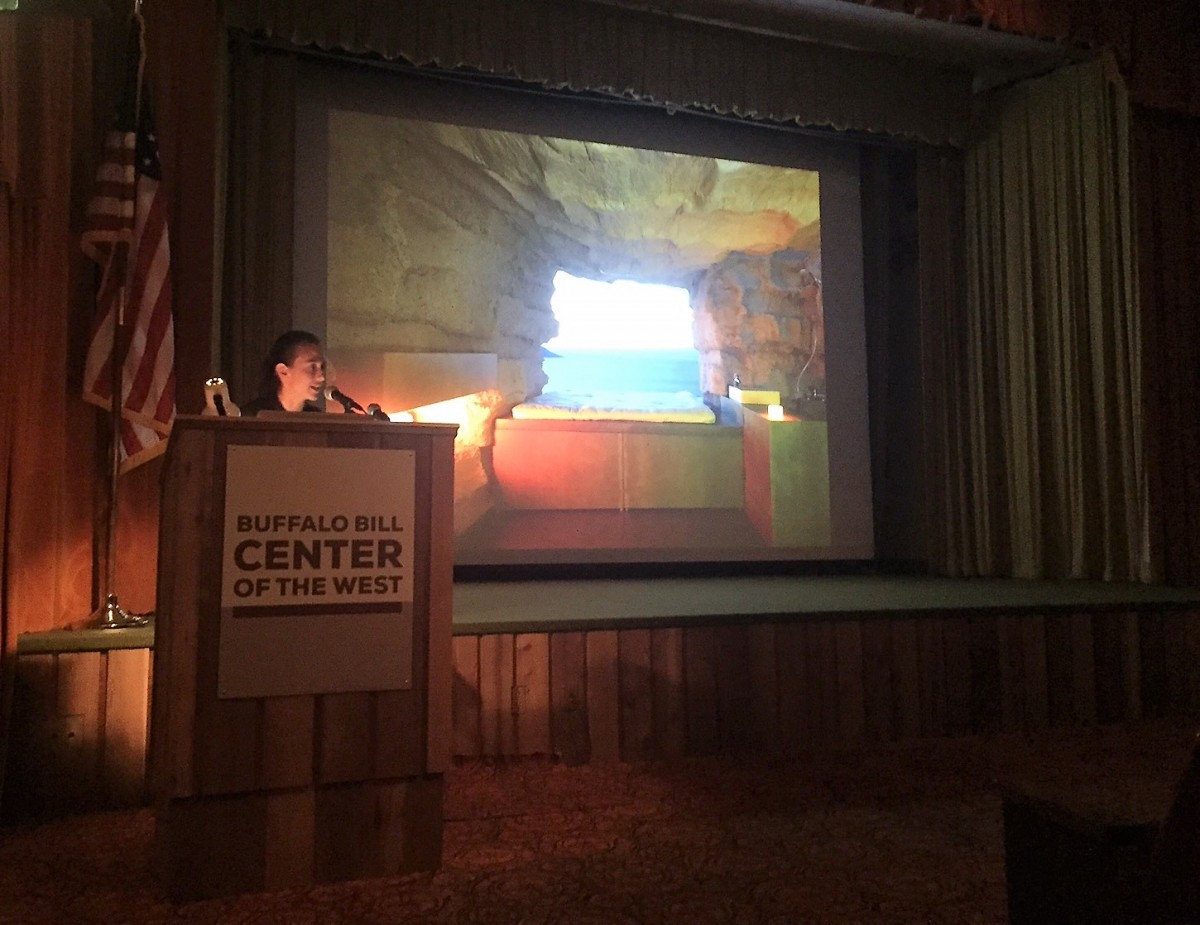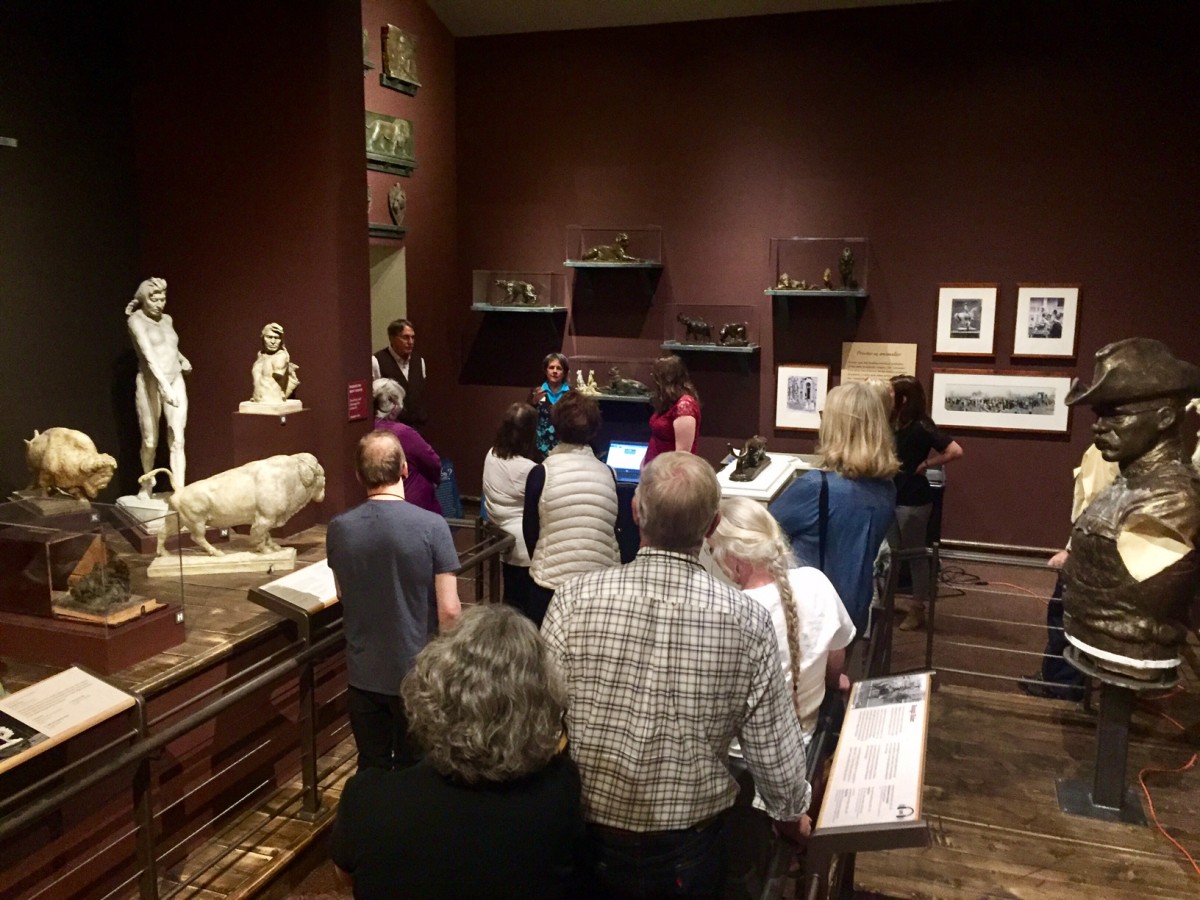When you hear the words western American sculpture, what comes to mind? Do you think of Remington’s Bronco Buster? Or maybe your interest begins and ends with the blue Mustang outside of Denver International Airport. No matter what kind of art you admire most, Forged and Founded: Western American Sculpture, a symposium sponsored by the Center’s Whitney Western Art Museum, had something for everyone. The event took place on June 17, 2017, and was the latest in a regular series of western art programs produced by the Whitney.
Karen McWhorter, the Whitney’s Scarlett Curator, introduced the gathered crowd to Cody’s connections to sculptors Gertrude Vanderbilt Whitney and Alexander Phimister Proctor. Whitney’s The Scout along with the world’s largest collection of Proctor material and works are located at the Center, and these influential artworks and their makers will be celebrated here into the future.
Dr. Peter H. Hassrick offered an intimate view of Alexander Phimister Proctor’s life as an avid outdoorsman and artist. Proctor’s bronze sculptures of wildlife, western life, and western heroes reflected his passion for the outdoors and captured the spirit of the West. This passion inspired generations of artists as well as his grandson, Phimister Proctor “Sandy” Church, and great-granddaughter, Laura Proctor Ames, who, along with other family members, keep his legacy alive today through their support of Proctor’s art and its preservation.
Dr. Carol C. Clark examined sculptures of the late 19th and early 20th centuries, mapping the trajectory of sculptures cast in the United states. During her talk, Clark mentioned a favorite work: Paul Manship’s Indian and Pronghorn Antelope. She discussed both the table-top-sized and monumental versions of the sculpture, the latter installed on the campus of the Mead Art Museum. You can see a smaller cast of Indian and Pronghorn Antelope in the Whitney Western Art Museum.
Tapping into the Whitney Western Art Museum’s founding story, Dr. Ellen Roberts offered an engaging talk on the life of sculptress Gertrude Vanderbilt Whitney. While Whitney is best known as a patron of the arts, her work as a sculptress stands on its own. Her experiences as a woman, mother, writer, traveler, and voracious lover of art all contributed to her style and choice of subject matter.
The morning’s discussions about historical sculptors helped illuminate the story of the rise of sculpture in America. In the afternoon, the focus shifted to the contemporary. Debora Mesa of Ensamble Studios revealed how architecture and sculpture have come together to create breathtaking site-specific works at Tippet Rise Art Center in Fishtail, Montana. Mesa, along with her colleagues, creates “structures” that unify art and science in their use of natural materials and reflection of earthen forms. These incredible, monumental works seem at once contemporary and ancient, and situated around the Art Center’s grounds, they guide visitors’ exploration of the landscape by acting as meeting sites or portals.
After a morning spent hearing about art of the past and present, symposium attendees got up close and personal with the creative process. Artists Linda Raynolds, Tracy Linder, and Dustin and Vic Payne presented some of their in-progress work, while Caleco Foundry and the Harry Jackson Studio held community open houses. Beverly Perkins, Chief Conservator at the Buffalo Bill Center of the West, along with Alison Rosenthal, Advanced Conservation Research Fellow, demonstrated how X-ray fluorescence can be used to study the material makeup of bronze sculptures. And last, but certainly not least, the Whitney Western Art Museum’s Curatorial Assistant, Nicole Harrison, led outdoor sculpture tours, introducing guests to the museum’s monumental masterworks.








